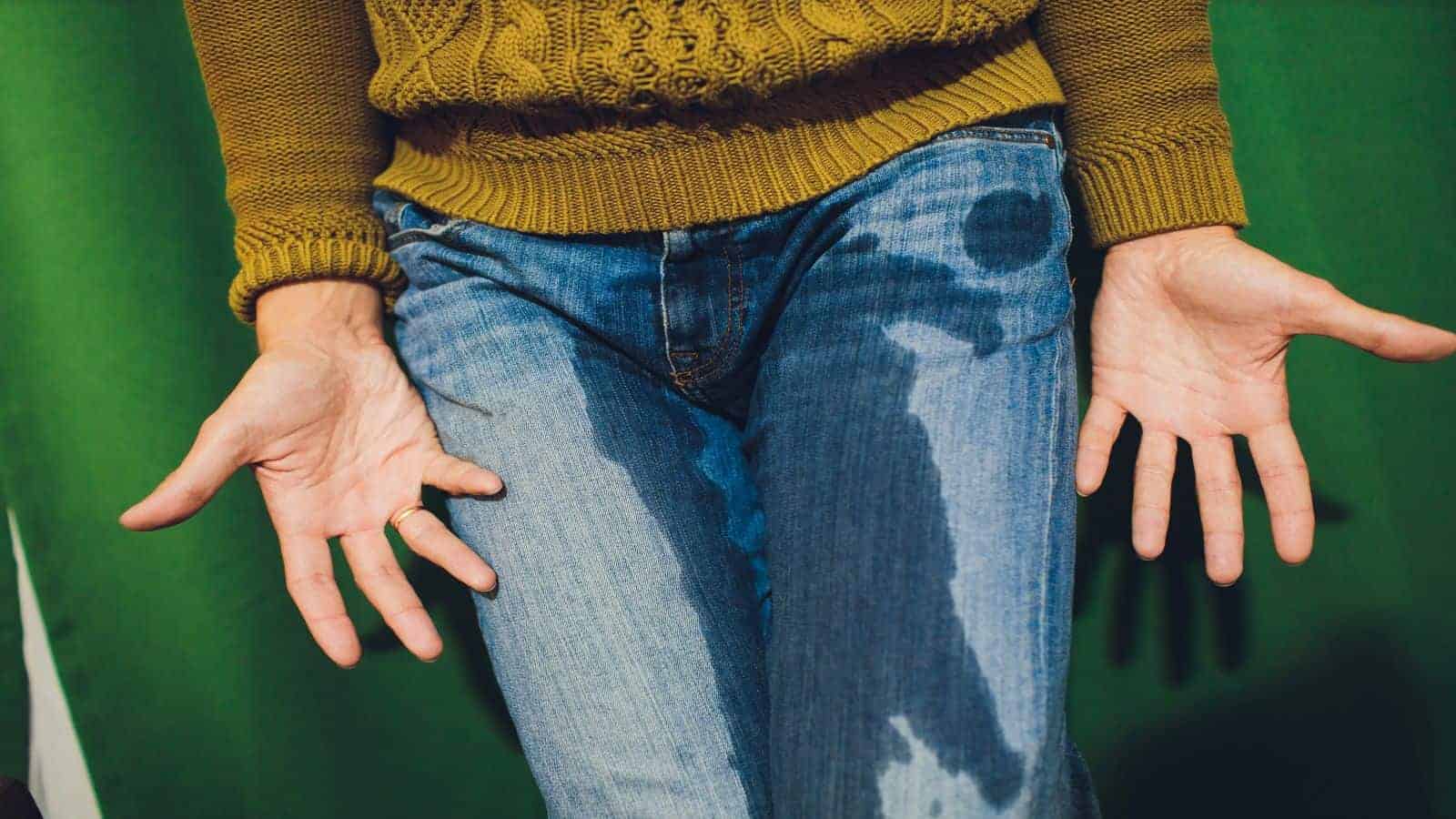As a woman, there are certain things that you don’t want to discuss with anyone, not even your doctor. If you have an embarrassing health problem, you will suffer in silence. When you’ve had children, it can do strange things to the pelvic floor and cause urinary incontinence. However, you don’t need to give birth to have issues with bladder control.
Alarming Statistics of An Embarrassing Health Problem
Did you know that there are more than 25 million people in this country that suffer from a form of urinary incontinence, and of those people, 75 percent are females? It’s an extremely uncomfortable subject to talk about, let alone buy products to prevent a humiliating accident.
It takes about 6.5 years for a woman to seek help for this embarrassing health problem. Yet, the trouble is so common that it affects millions of people worldwide. Over 20 percent of women between the ages of 18-44 will struggle with the loss of control from UI, which is about one in four. However, after 60 years of age, the number dips to 23 percent.
Did you know that women are twice as likely to have problems with UI than men? The chief cause of these issues is childbirth, but it’s not the only reason. You must arm yourself with knowledge about the subject so that you can do something about it.
Common Causes of UI
Many things can cause the bladder area to misfunction. Some of the most common are as follows:
•Persistent Coughing
•Constipation
•Being Overweight or Obese
•Frequent Urinary Tract Infections
•Obstructions of the bladder
•Weak Muscles Loss of Sphincter Strength
•Nerve damage
•Neurological Disorders
•Cancer
Understanding the Different Types of Urinary Incontinence (an embarrassing health problem for many)
Yes, some people are cured of their incontinence, while others find methods to manage their difficulties. The first thing you should understand is the four different types that plague a woman.
Once you know the kind of incontinence you’re dealing with, you can take proactive steps to handle it. Here are the different varieties.
• Stress Incontinence
You may experience stress incontinence when you laugh, sneeze, or cough. A small amount of urine leaks out of the urethra and spills out of your body. Of all the varieties of incontinence, SI is the most common. Doctors typically see this problem in older women, though it can happen to you at any age.
The muscles in the pelvic floor have become weakened, or the sphincter muscle in the bladder is not functioning as it should. The risk for those with SI is obesity, smoking cigarettes, and those who chronically cough. Though this is an embarrassing problem, the amount of urine that leaks is usually not significant.
Most women can control SI by wearing a pad or disposable brief throughout the day. Thankfully, you can correct this by doing Kegel exercises to strengthen the pelvic floor as well as trying bladder training. In bladder training, you learn to hold your bladder longer by not giving in to those frequent urges to urinate. If these methods fail, then there are surgical remedies to consider.
• Urge Incontinence
Urge incontinence, unlike SI, is an indication that there is a problem within the bladder system. Women who experience this variety feel a sudden urge to urinate and may lose control of their bladder before getting to the bathroom. You may hear your doctor refer to this condition as an overactive bladder.
UI occurs when the bladder contracts abnormally. In a healthy bladder, the sphincter muscles effectively control the flow of urine. However, when these muscles become damaged, they contract more often than they should, which causes the bladder to be overactive. The force from the contraction is enough to override the muscles found in the urethra, so the urine inside your bladder leaks outside the body.
Why does the bladder experience these premature contractions in UI? The most common causes are from:
•Stroke
•Parkinson’s Disease
•Diabetes
•Multiple Sclerosis
•Spinal Cord Damage
•An Irritated Bladder
Your bladder can become irritated by many things, including drinking too much soda and avoiding water. They can use many different treatment forms for UI, depending on the cause. If there is damage caused by a significant illness, electrical stimulation to the bladder may help.
They can also use behavioral treatments to try to minimize the damage and bring relief. Unlike stress incontinence, this one is a bit trickier to treat.
• Mixed Incontinence
Roughly 14 percent of women who have incontinence will face a mixed variety. The condition is diagnosed when you face two or more types of bladder control issues, like stress and urinary incontinence. Experts surmise that when the muscles become weak in the bladder area that it sets off a chain reaction in the region that causes two varieties.
When you have mixed incontinence, you can leak when you laugh, cough, or exercise at the gym. Additionally, you may also have urgency problems and feel like you can’t get to the bathroom quickly enough.
• Temporary Incontinence
Yet another type of incontinence is the temporary variety. Sometimes, things can irritate the bladder or cause temporary damage, but the body can soon heal and overcome them. For instance, a urinary tract infection irritates the bladder area, and the disease makes things out of whack.
With temporary incontinence, the symptoms go away as soon as the situation is resolved. So, when you treat the underlying condition, like the UTI, then the bladder leakage will go away.
• Overflow Incontinence
Overflow incontinence is leakage that comes about from a loss of strength from the bladder muscles. It can also be the cause of an obstruction in the bladder where the urine empties. The most common problem with this UI is that women cannot empty their bladder completely, so they retain urine.
You may find yourself having the urge to go to the bathroom frequently, but you may not be able to fully empty all the urine that’s in there, causing further issues.
• Functional Incontinence
Functional incontinence is an embarrassing health problem that is observed in people with psychological issues. It affects children and adults on the autism spectrum and those who suffer from social anxiety disorders and other mental disturbances.
A woman who is afraid to go into the public restroom may hold her bladder all day until the bladder leaks under pressure. She may only feel comfortable using the facilities at home. Another angle with FI is that a person cannot get to the bathroom in time.
For those with arthritis and reduced vision, it may make those trips to the bathroom difficult or nearly impossible. Having a portable potty-chair might be helpful when a person cannot get to the restroom in time.
• Complete Incontinence
No one likes to feel a loss of control from their bladder, especially when they’re not close to a bathroom. Sadly, when you have a CI, you cannot control your bladder functions at all. These are often people who have went years with an undiagnosed problem that never got treatment.
Additionally, CI is often seen in older people who have weak muscles, which affects the muscles in the bladder area. Some surgical maneuvers may be helpful, but it’s usually not something that can be treated. Many people live with this embarrassing health problem and never talk to anyone about it.
Final Thoughts on Treating This Embarrassing Health Problem
Treating incontinence is not always straightforward, especially if you have a couple of varieties. The first step is to identify which type you have so that a treatment plan can be formulated. Even though this is an embarrassing health problem, you must reach out to your doctor for help.
When you have bladder leakage, you don’t know if it’s caused by childbirth or cancer until you are checked. One of the first things that a doctor will do is a cystoscopy. A cystoscopy is a non-invasive test that looks at the walls of the bladder.
During this test, your doctor will be able to see if you have a muscle problem or damage to the pelvic floor. Your medical history will also play a significant part in your diagnosis as conditions like Parkinson’s, and MS can affect your nerves in this area.
Once the problem has been identified, then the goal is to treat the issue. Sometimes, a simple fix is strengthening those muscles with Kegels, while other times, the bladder might need to be tucked. Additionally, any extra weight that you carry around can put pressure on your mid-section and affect the bladder. Losing weight may be the simplest way to end this embarrassing health problem.
The key is not to wait until the damage is severe. Don’t be like statistics, and let years pass with no answers. Call and make an appointment today so that you can live your life without fear of embarrassment. There are treatment options that can reduce or eliminate the difficulties you’re having.




















